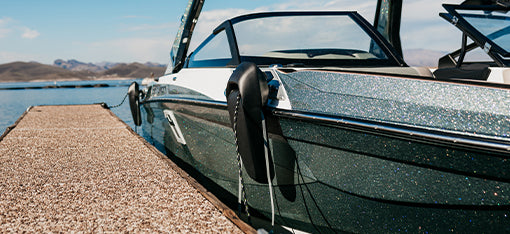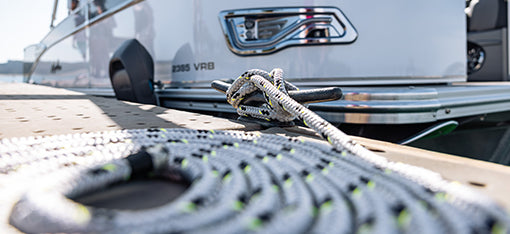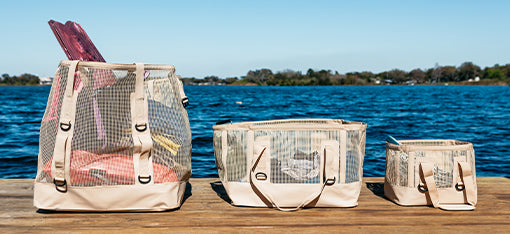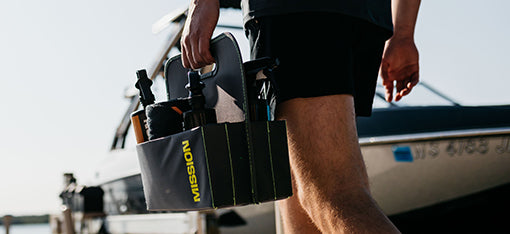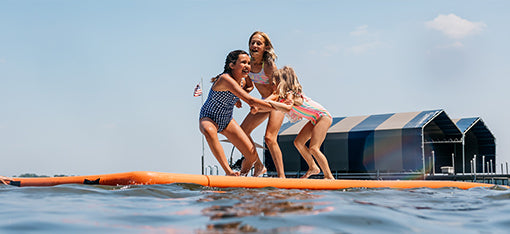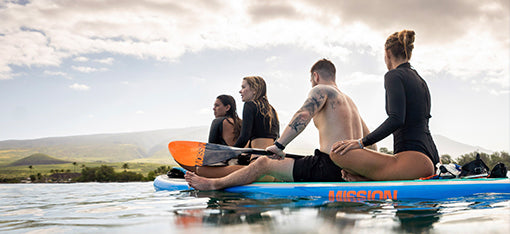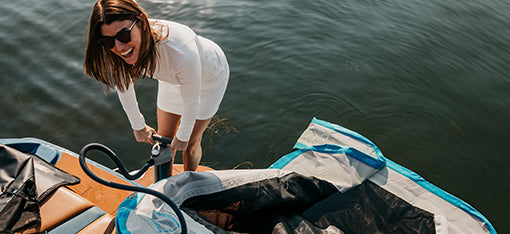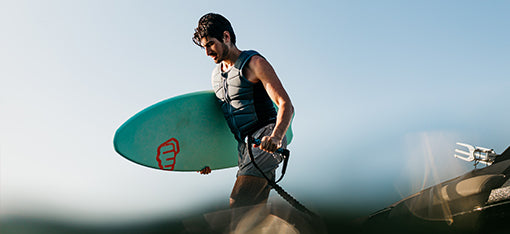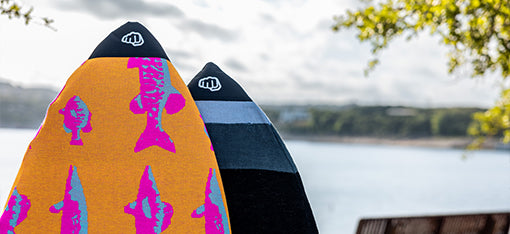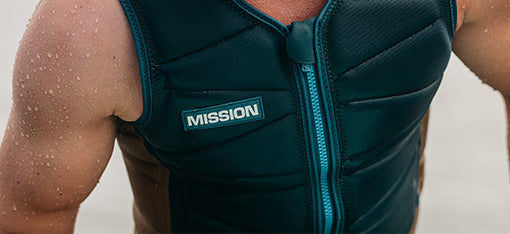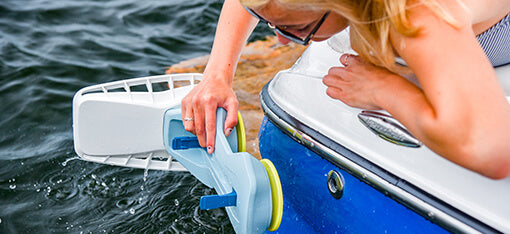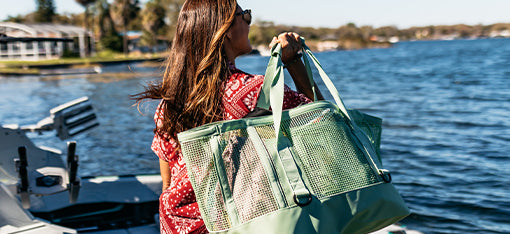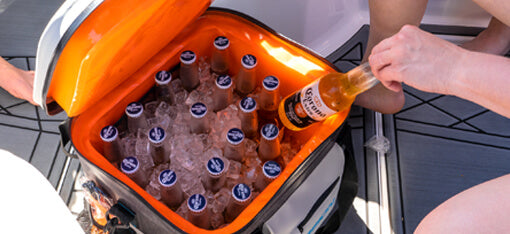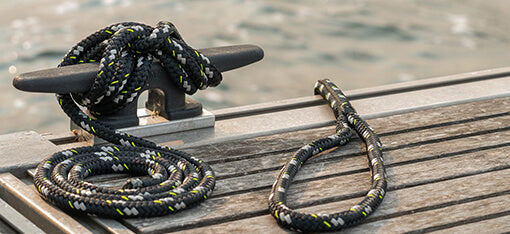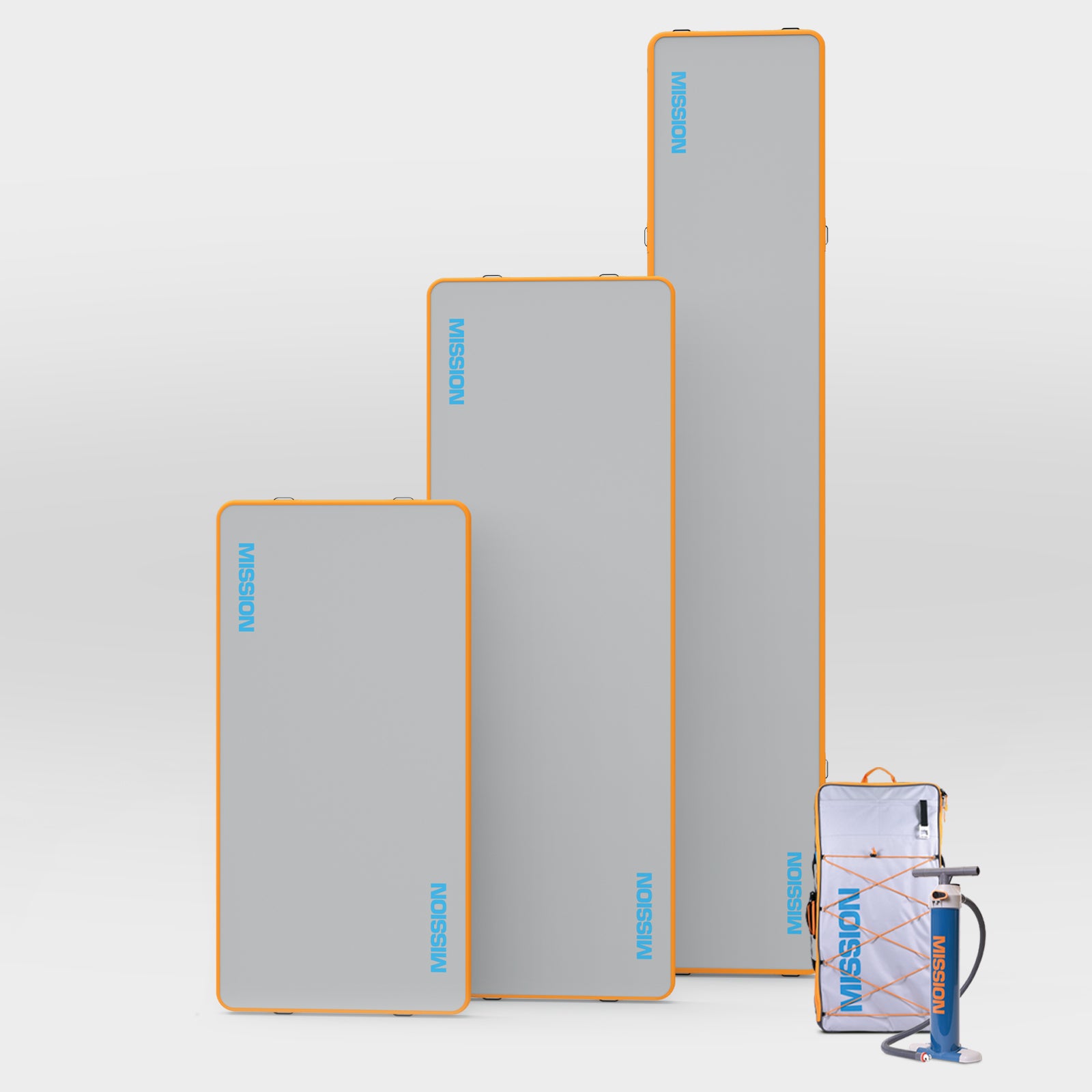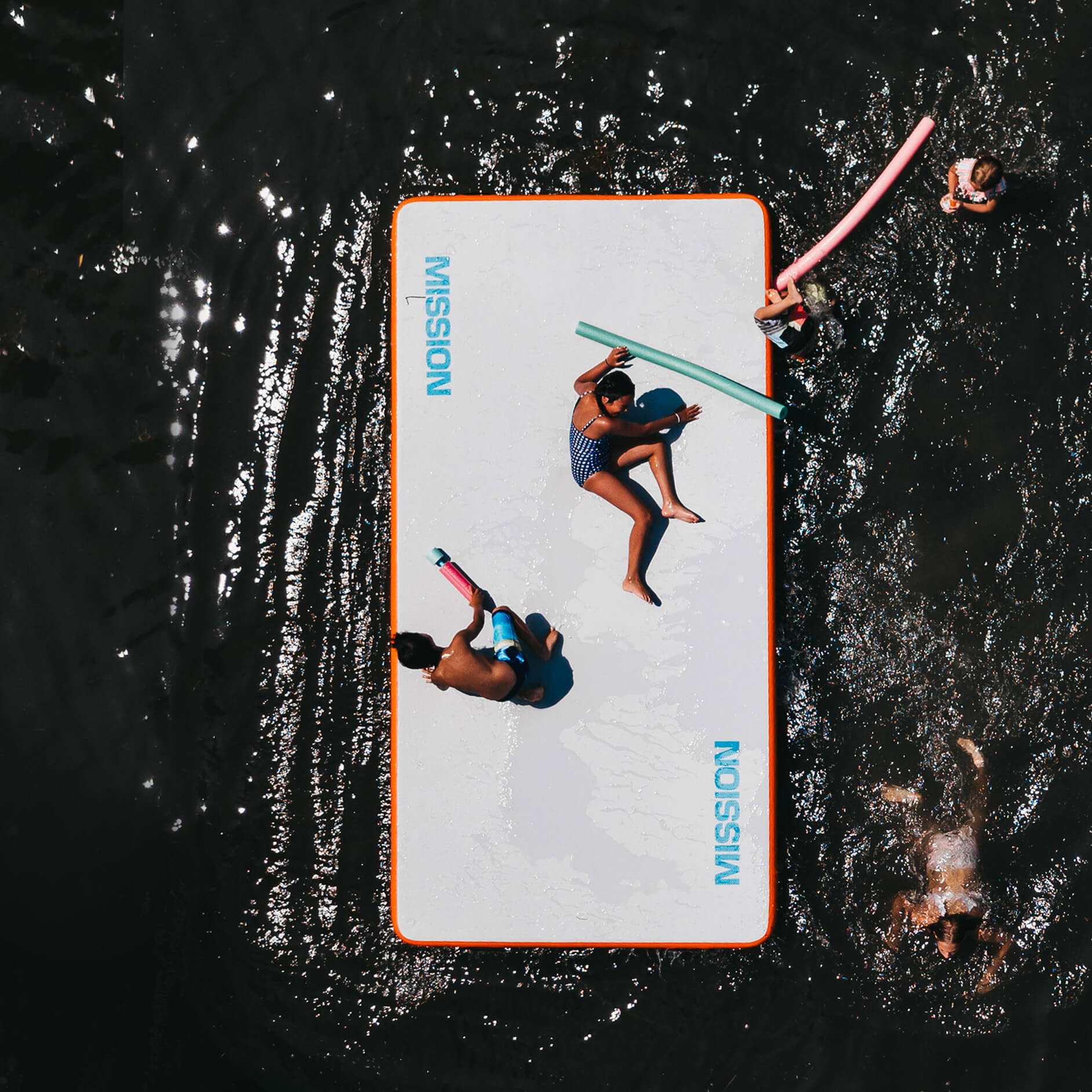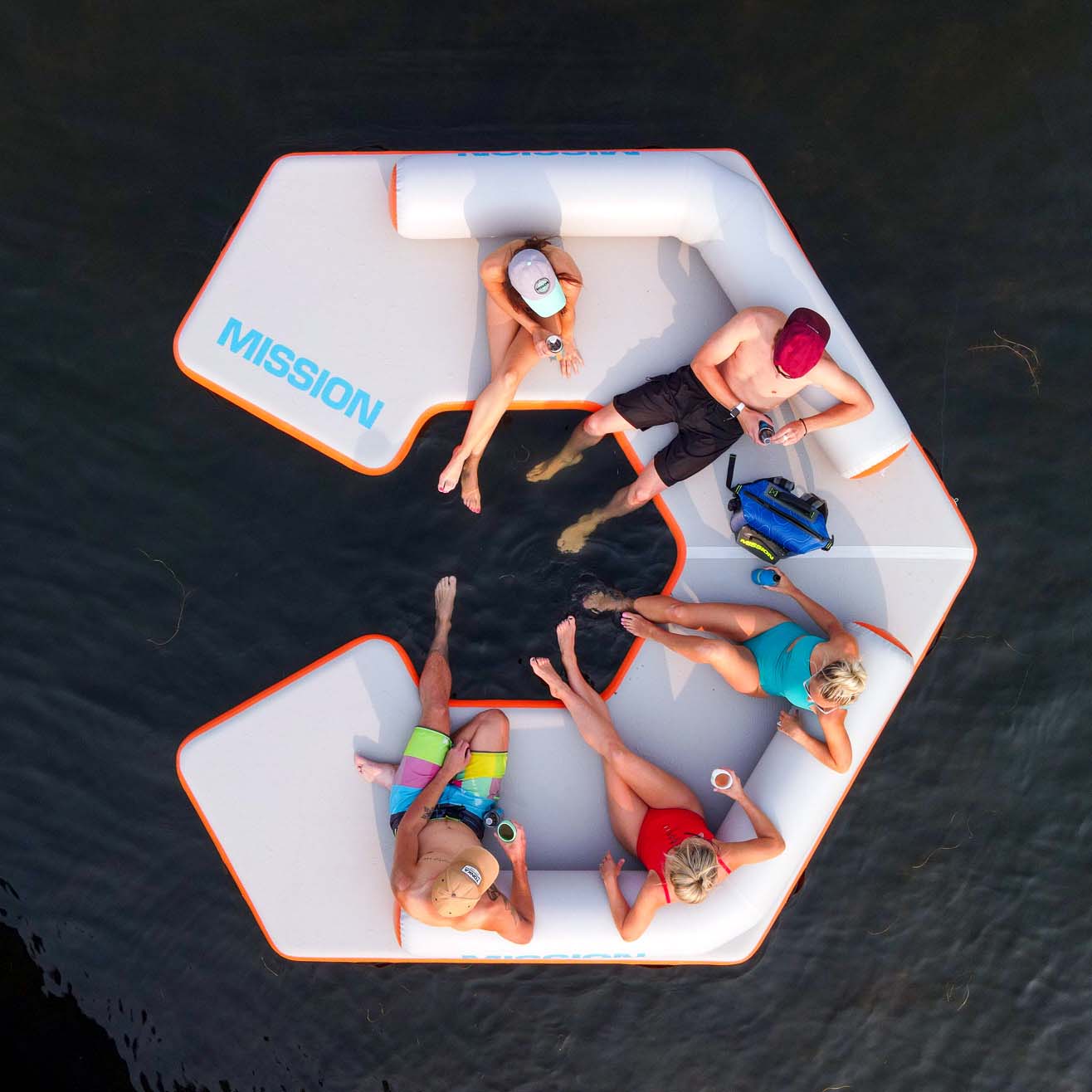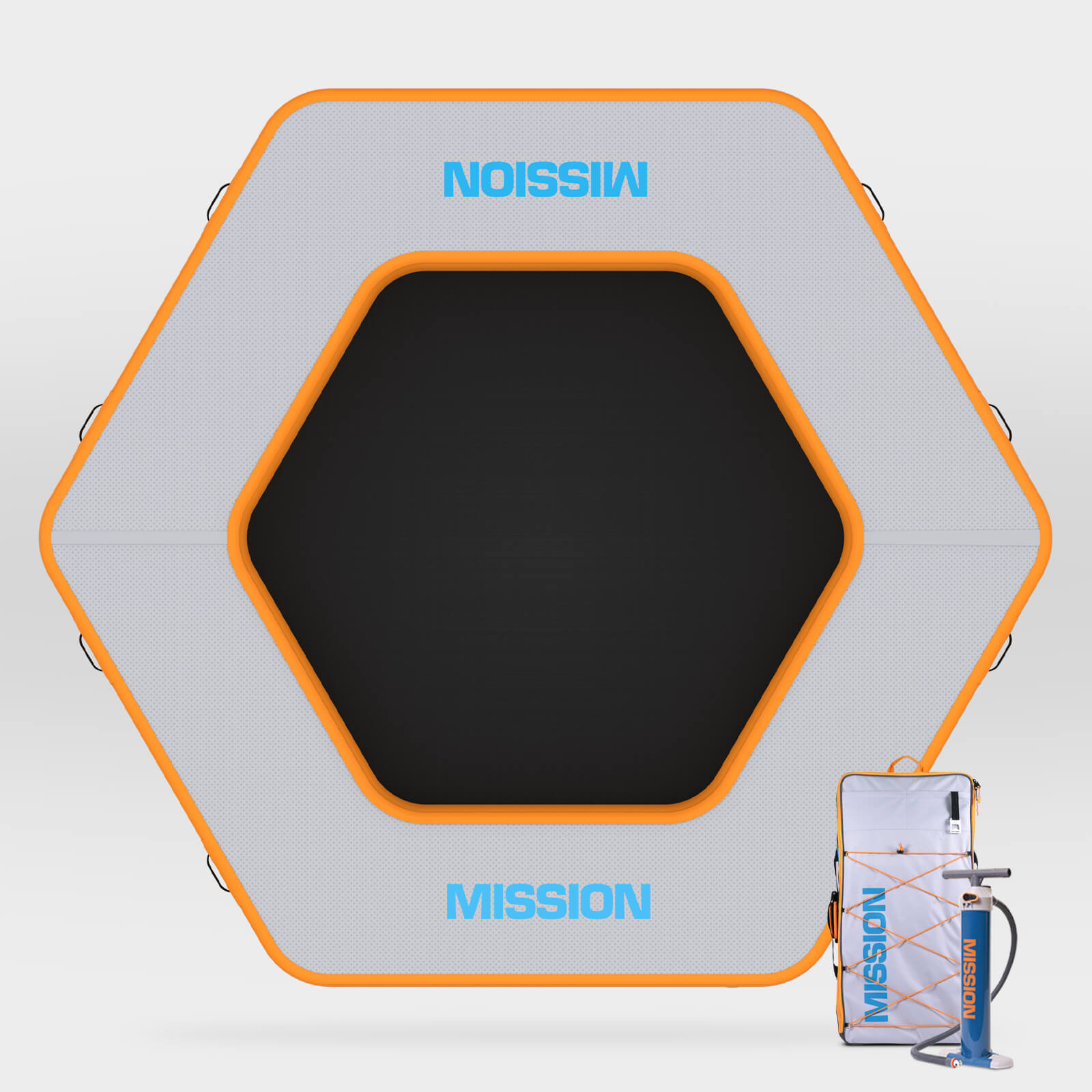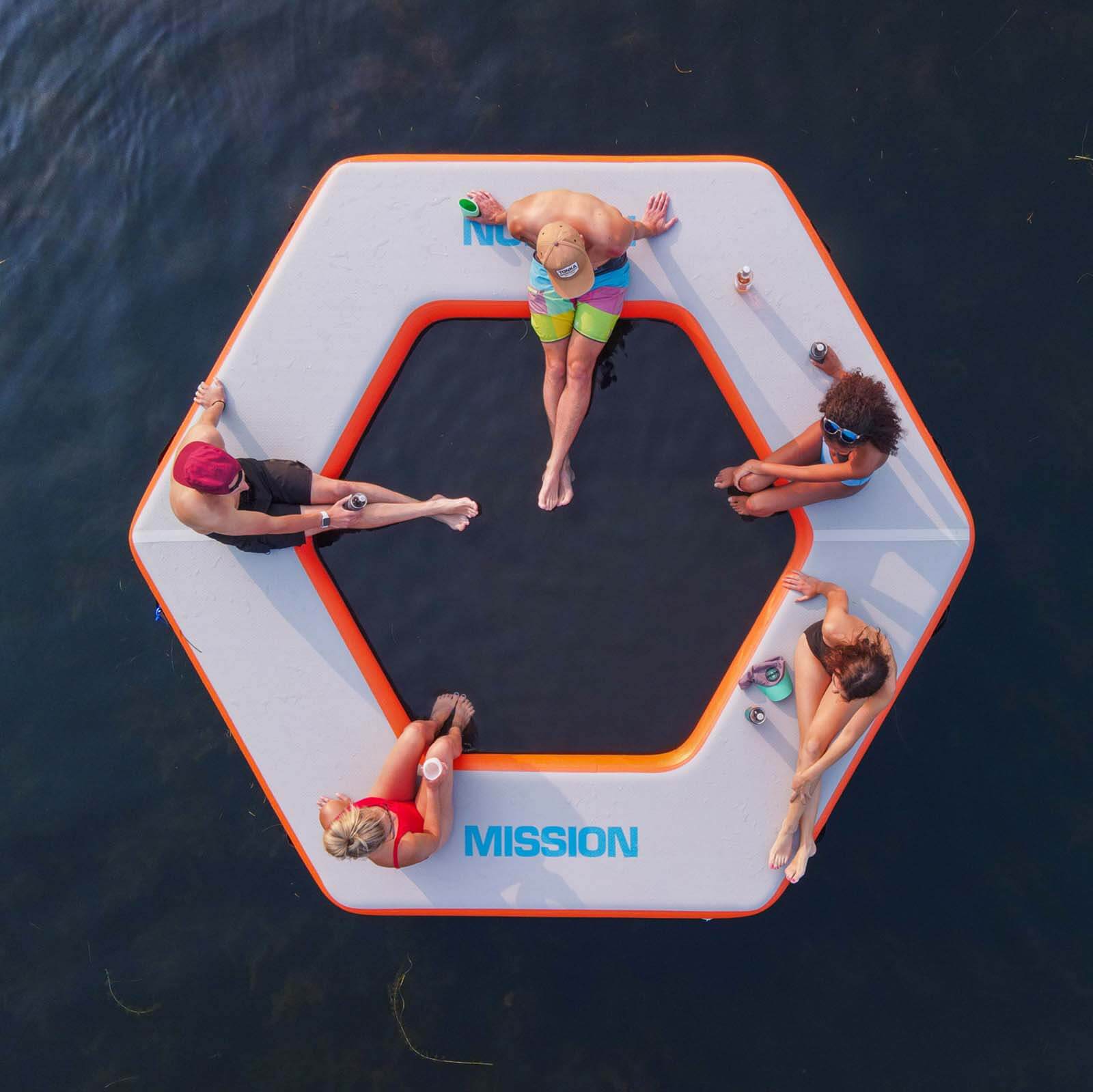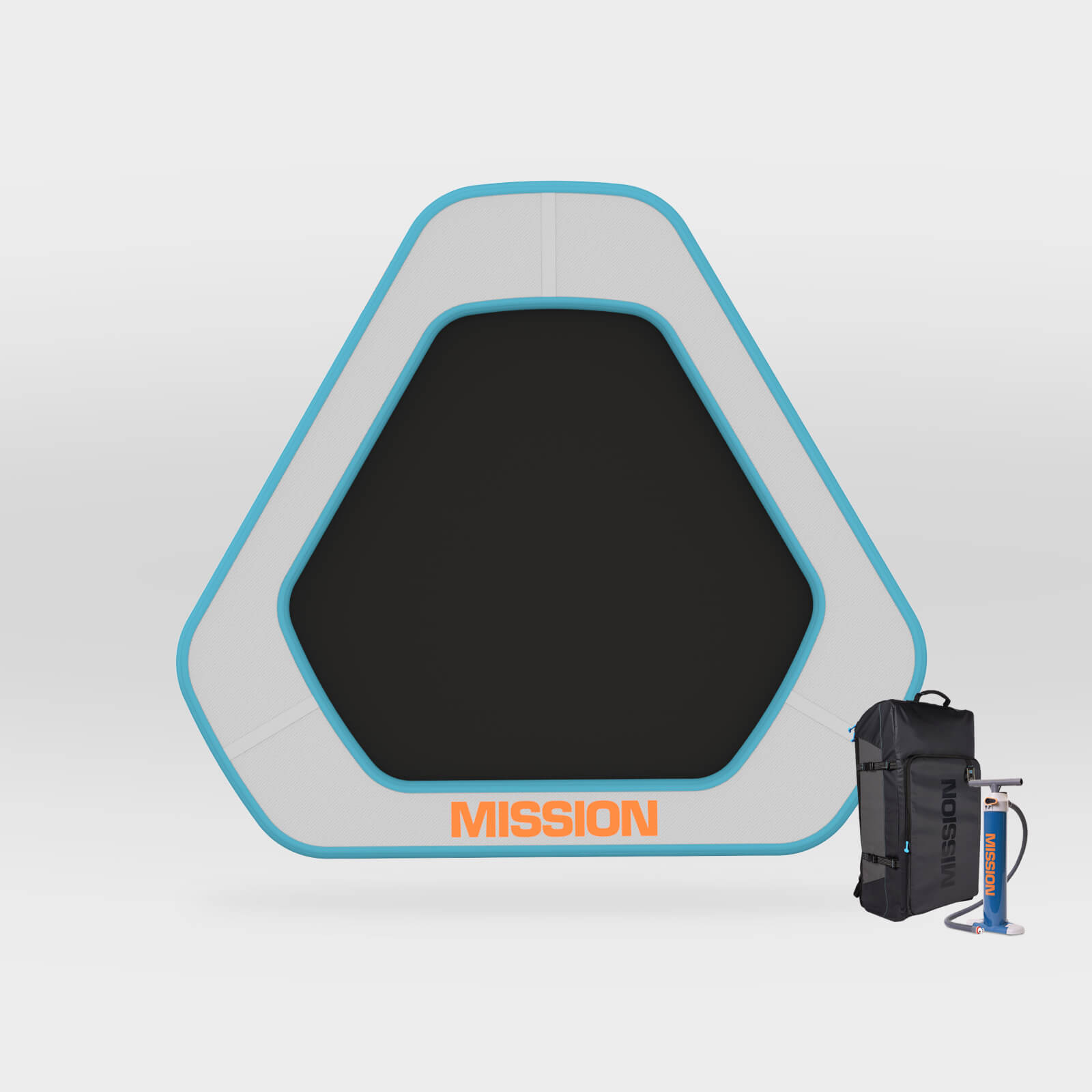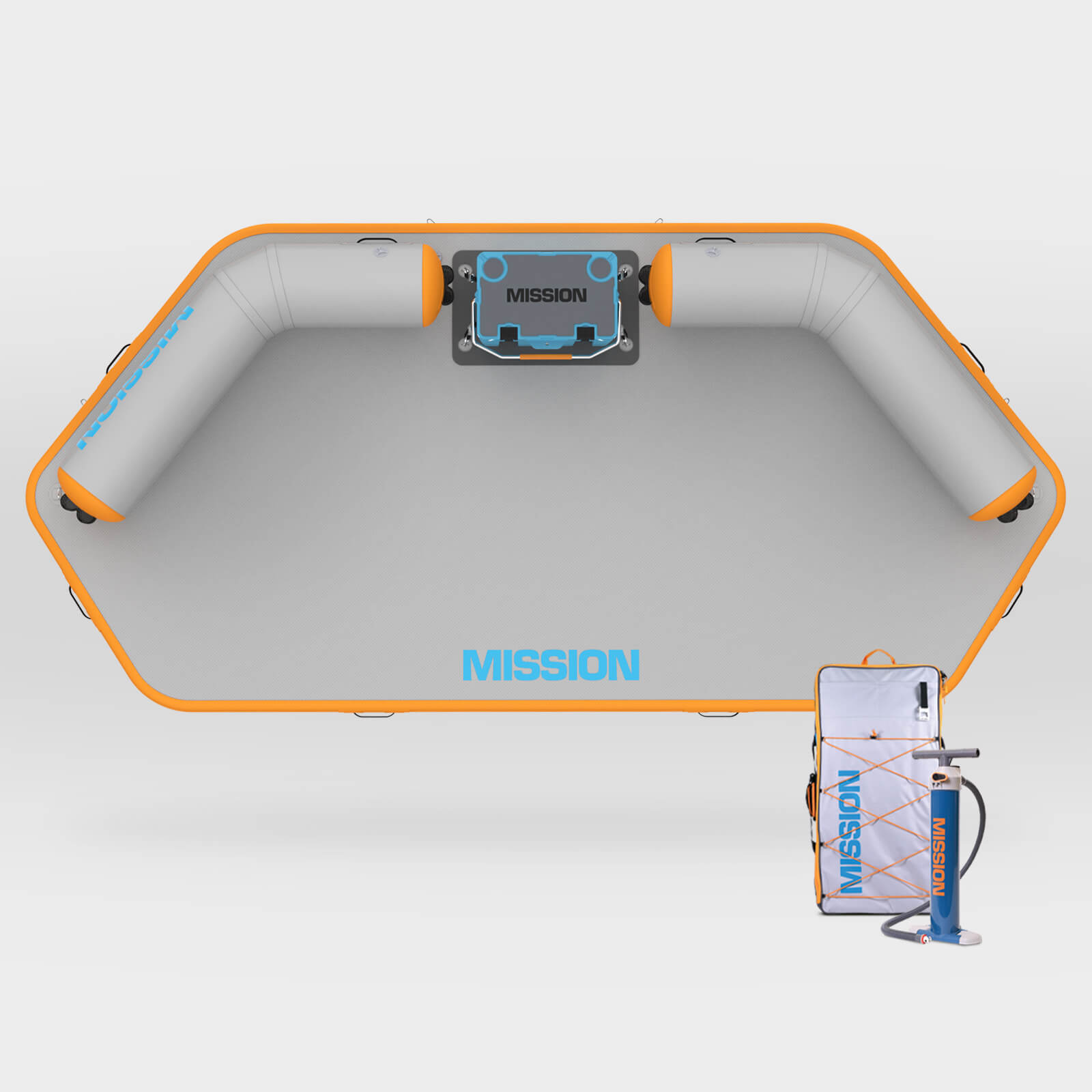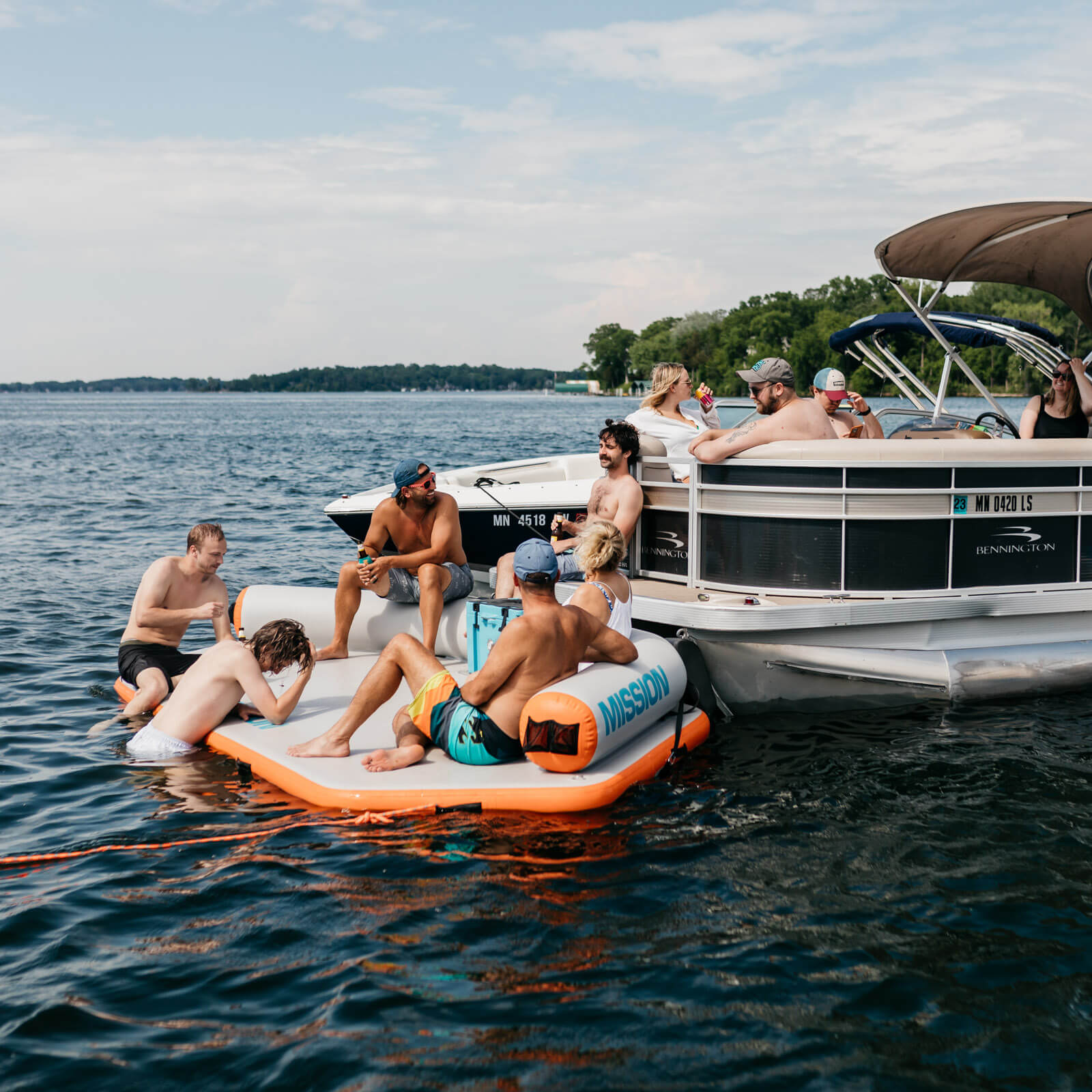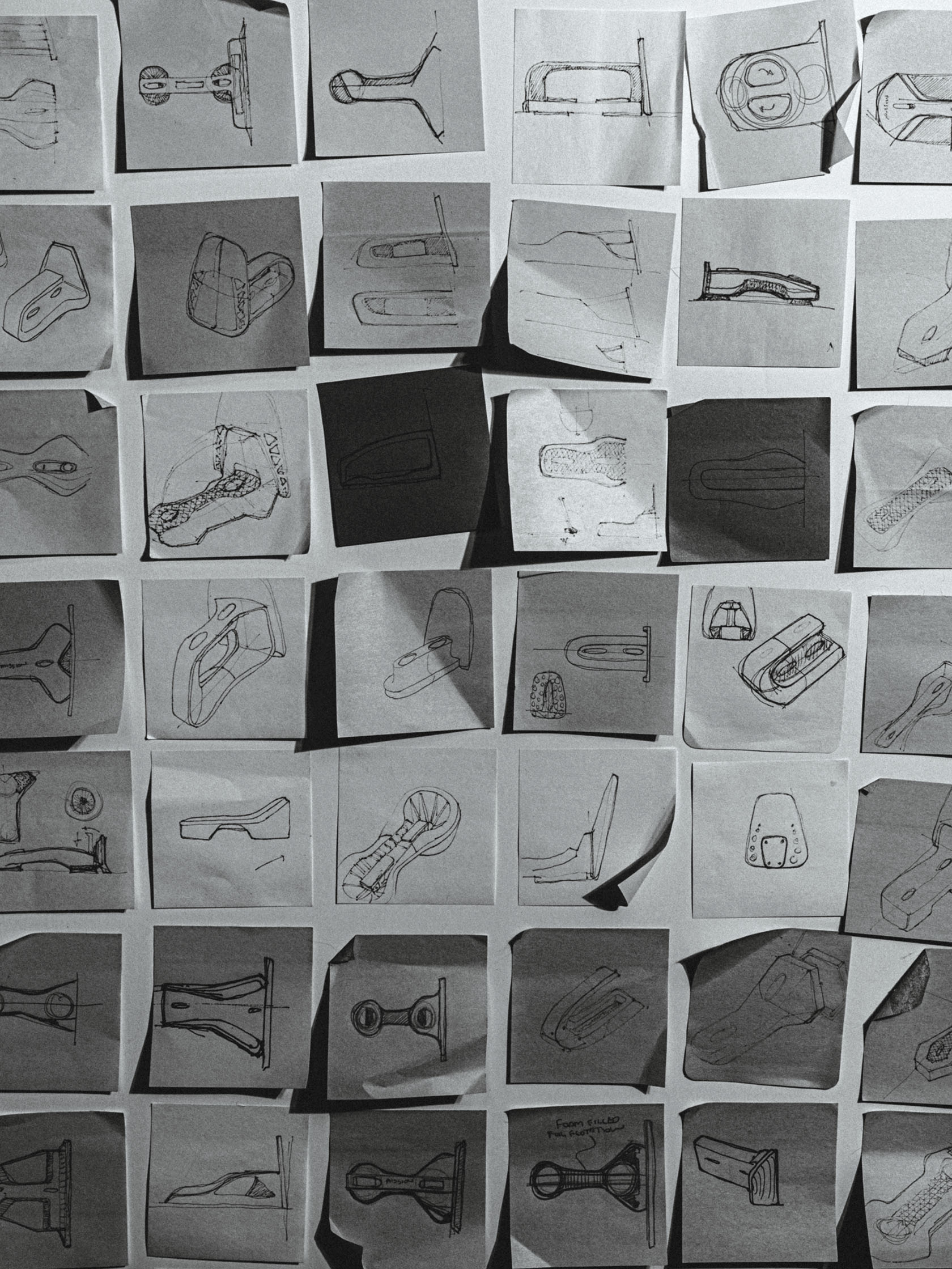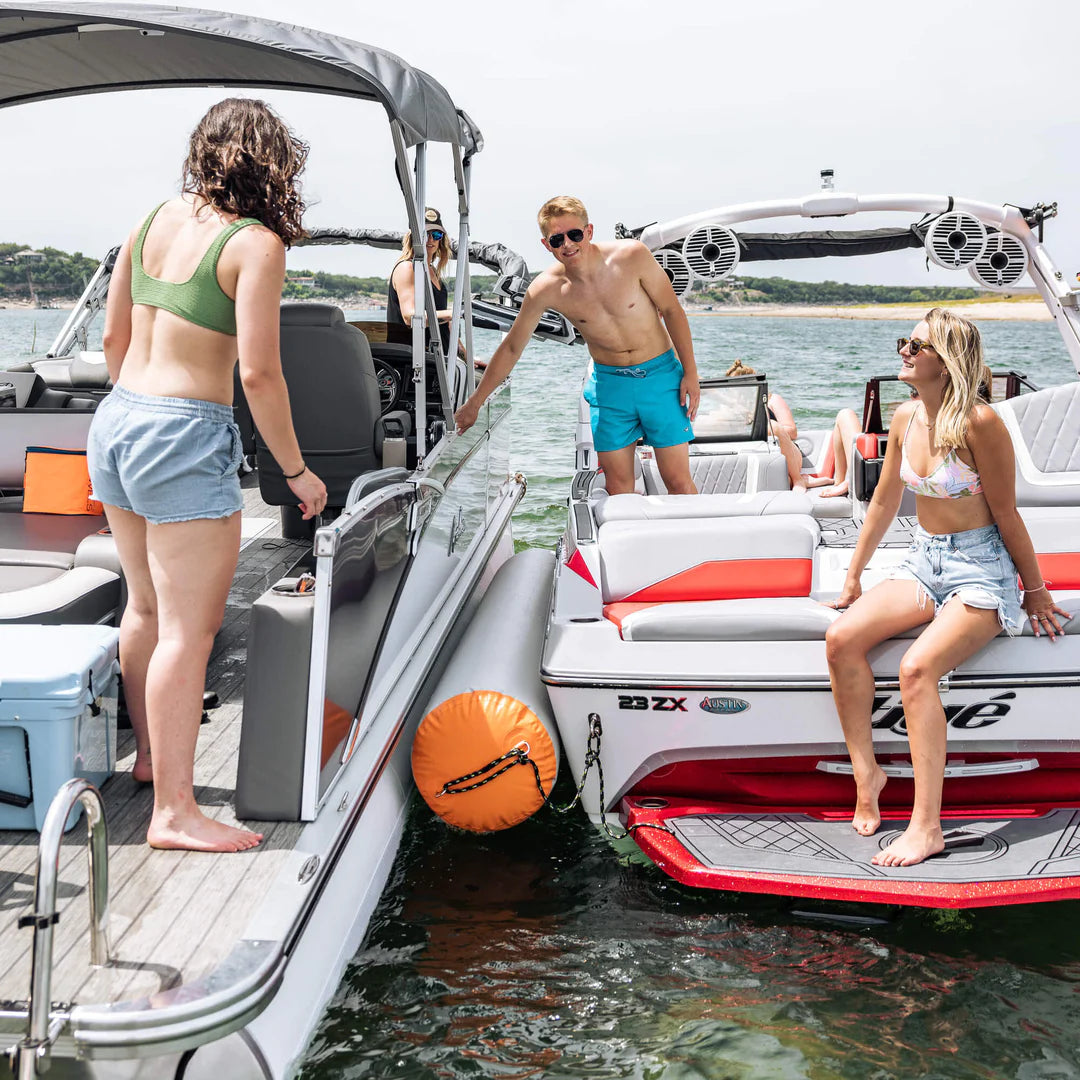How to Get a Great Wakesurf Wave
Wakesurfing behind a boat is an awesome and challenging lake-life activity. But sometimes, achieving a great wakesurf wave can feel just as tough as the water sport itself!
Creating a great surf wave comes from striking a balance between your ballast weight, ballast location, boat speed, and the location of your wake shaper. To make sure your waves don’t fall flat this summer, we’ve put together a guide on the four elements that can make (or break) a surf wave. Ready to ride some killer waves? Let’s get started.
What Makes a Great Wakesurf Wave?
If you want to learn how to surf behind a boat, the first step is being able to make a great wakesurf wave. The four factors to creating the best wave for wakesurfing are:
- A clean wave face
- The size and shape of the wave
- The length of the wave
- The “push” of the wave
Let’s dive a little deeper:
1. A Clean Wave Face
Your boat’s hull design, prop size and rotation, and the location of an aftermarket wakesurf wake shaper (like our DELTA 2.0 or ECHO wake shapers) all play a part in creating a clean, surfable wave. Your boat hull and prop aren’t going to change anytime soon, so changing the position of your wake shaper is the best way to fine-tune your process until you find out what works best for your boat.
Wake Shaper Placement:
Start by finding a flat, smooth section near the back of the boat. Position your wake shaper so it runs just below the surface of the water when you’re at “wakesurf speed” (anywhere from 9 to 13 mph).
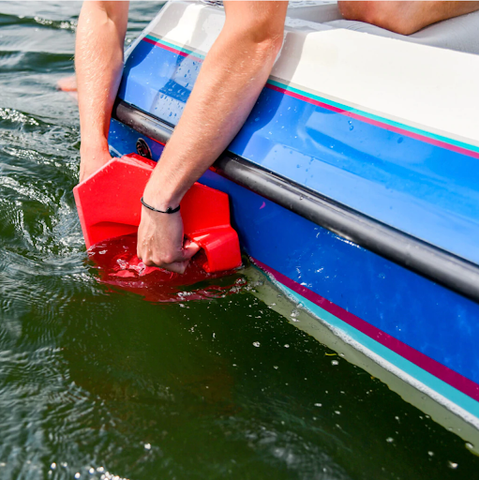
By placing your wake shaper in this position, it’ll be right in the center of the stream of water rushing past the hull. This introduces the turbulence you need to reduce the strength of that stream.
As you’re adjusting the location of your wake shaper, watch the top of the surf wave. If it looks crusty, move your wake shaper up, down, or further back on the side of the boat until things smooth out. The less crust the better.
2. Size and Shape of the Wave
Once your wave is clean, you can start shaping it. The biggest influences on wave shape will be your ballast setup and location and your boat speed.
The Shaping Process:
Start the shaping process by evenly weighting the boat left to right. Keep in mind that listing your boat is unnecessary; it often reduces the effectiveness of your wake shaper because you’ll end up lifting the wake shaper out of the water.
Add about 60% of the ballast in the rear and 40% in the front. If you have a center engine boat you'll need to add more ballast to the rear.
Additionally, if you’re only running stock ballast tanks, only fill the rear tanks. This gets the back of the boat further down in the water, preventing the boat from planing and will keep your wake shaper fully submerged.
Increasing the Wave’s Height:
To increase the height of the surf wave, add more ballast to the rear of the boat. This digs the back end of the boat further down into the water, resulting in more displacement (which in turn increases the wave height).
The more height you add to your wave, the less length and push it will have. Remember, it’s about finding the right balance between height and length. Following this process will get you the best and biggest wakesurf waves.
3. Length of the Wave
When you’ve got your ballast and boat speed dialed in, you’ll get a nice tube forming at the back of the wave.

Increasing the length of the wave gives the surfer a lot more room to play and will allow them to recover from tricks without falling off the back of the wave. Create a longer wave by increasing boat speed and adding more ballast to the front of your boat.
4. Wave “Push”
The “push” is the amount of energy contained in a wave. This is what propels the surfer forward and keeps them in the wave. The height of a wave definitely helps with this, however, boat speed is what generates the most push.
Aftermarket wake shapers, like DELTA 2.0 or ECHO, enable you to run at a much faster speed than you could if you were listing your boat (11 to 12 miles an hour versus 9 to 10 miles an hour).

By increasing the boat speed, the water becomes firmer so that the wakesurf board planes out, which generates more lift and less drag. This gets the board out of the water so it becomes much more forgiving when dropping the handle and doing tricks.
5. Wakesurf Board Length
The length of your wakesurf board also plays a role in how much push you feel while on the wave. Longer boards generate more lift, so they’re good for smaller waves or larger surfers; however, they’re less maneuverable, so tricks are more difficult.
It is crucial that you find a wakesurf board that fits your weight range. We’ve noticed that many of the published weight ranges seem to be calculated with smaller waves in mind. Now that you'll have a larger wave with more push, you may be able to drop down a size or improve maneuverability while doing tricks.
Ready to Have the Best Wakesurfing Experience?
Get ready to hop on some gnarly waves by shopping MISSION’s collection of wakesurf boards and wake shapers today. If you have questions about creating killer wakesurf waves or you're wondering which board is right for you, drop us a line. We look forward to getting you out on the water!





